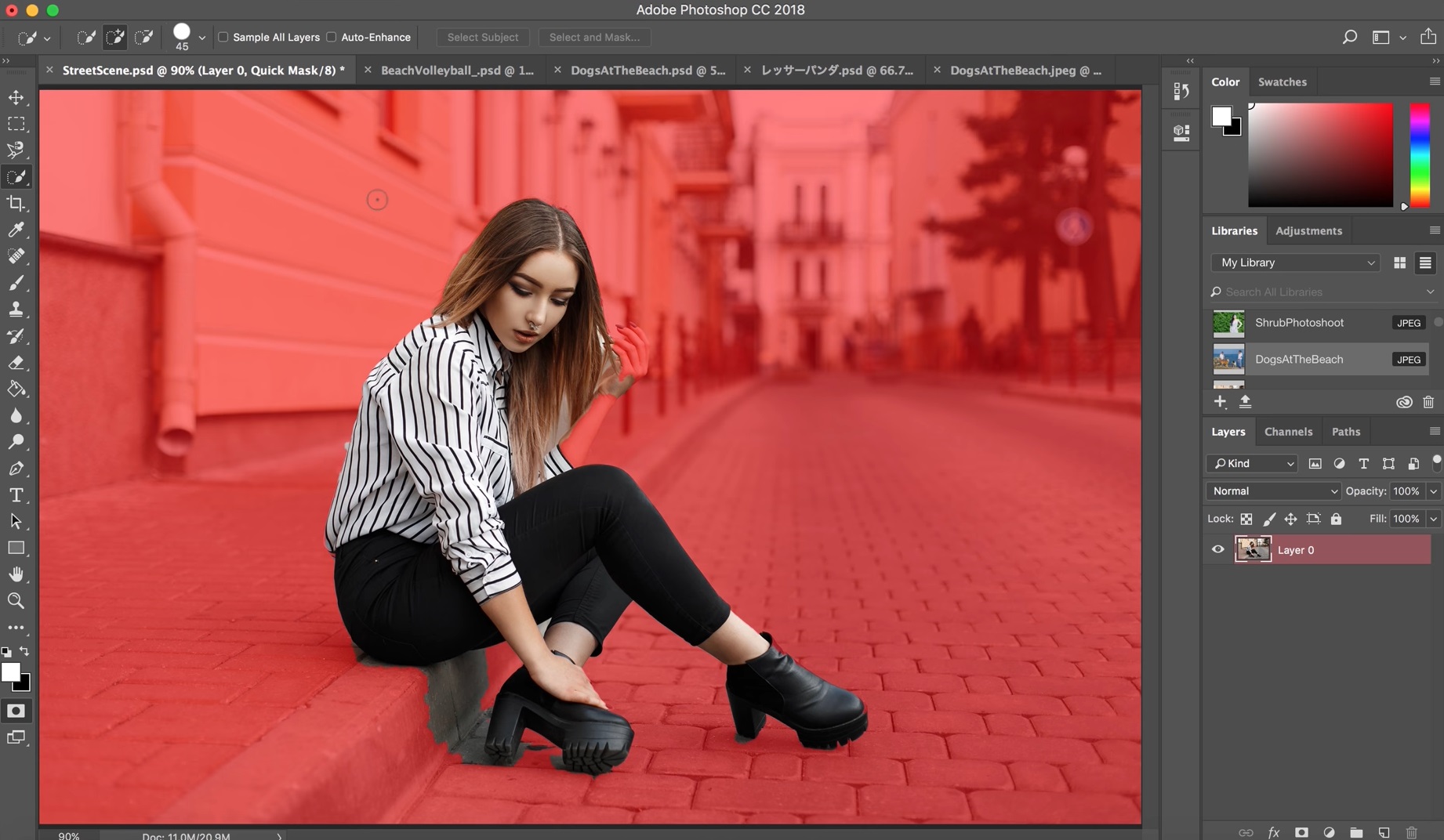Vertus Fluid Mask 3.3.18
Download Vertus Fluid Mask. An award-winning image editor for Windows that specializes in cutting and masking image files. Vertus Fluid Mask 3.3.18 Fluid Mask is a highly advanced software tool designed to make life easier for everyone who creates cut outs. Built as a plug-in to Adobe Photoshop, Fluid Mask is the new next-generation cut-out tool.
Fluid Mask is a highly advanced software tool designed to make life easier for everyone who creates cut outs. Built as a plug-in to Adobe Photoshop, Fluid Mask is the new next-generation cut-out tool.
Vertus Fluid Mask v3.3.6 41 Mb Fluid Mask - plug-in for Photoshop (available for all image editors potderzhivayu format.8 bf). The essence of the functioning of the product lies in the simulation process of our eyes and thinking through automatic analysis of raster images. Our Review of Fluid Mask 3 I was asked to have a look at piece of software called Fluid Mask 3 made by Vertus. It’s essentially a plug-in for Adobe Photoshop that assists in doing cutouts. I spent 18 years in the graphic design and print industry and I couldn’t even begin to think how many cutouts I have done in that time. Vertus Fluid Mask is a semi-automated tool that allows you to cut objects from the layer at the user's choice. It works quite simply: the layer is analyzed first, and the program allocates on it all the clear and fuzzy boundaries that it finds during the analysis of the image, folding completely Photoshop itself and loading its own interface.
Behind the product is breakthrough technology that mimics the way the eye, optic-nerve and brain perform visual processing. It offers an intuitive, accurate and fast approach to cut outs.
A key feature is the new Edge Overlay showing object edges within an image. Suddenly masking become a whole lot easier – it’s now possible to select, group and mask objects in images to make great cut outs.
Masking is the process of selecting and then erasing parts of an image. Typically, you select the parts of the image you want to keep and then erase the areas you want to delete.
You can then blend this cut-out seamlessly onto a second image – for example, placing a new sky or background image behind a tree, or placing a picture of a golfer about to take a shot onto a desert so it looks like they are in the world’s largest bunker!
To mask an image in most image editors, you use a selection tool to isolate the part of the image you want to keep, and erase the rest. This might seem like an easy task, but in fact, it is time consuming and difficult to get a good result.
Images with complex backgrounds are very difficult to cut out well and you are often left with bits of background color that can create an unrealistic or exaggerated halo effect around the edge.
Fluid Mask uses breakthrough technology that mimics the way your eyes, optic nerves and brain process visual information to analyze your image for changes in texture and color, detecting even subtle edges, to divide the image into areas or ‘objects’ containing similar visual properties.
You can then use the tools provided to quickly paint and fill these segments in a process as simple as painting by numbers.
Fantastic results
You can now obtain professional results easier than ever before. Make super fine mask selections using new sampling and selecting tools. Check out the new edge blending algorithms. And the new complex hair blending that automatically gets great results from multi-colored whispy hair. No longer should hair be the cutting-out nightmare it is today.
Faster than ever
Not only is image processing time dramatically reduced but we have concentrated on speeding up workflow. Check out features like saving your workspace settings from one image to the next for runs of studio shots; and our new Patch technology with its intuitive tool-set for working on those difficult problem areas with compression artefact, poor edges and complicated backgrounds.
Vertus Fluid Mask Photoshop Background
Easy to pick up and use
Fluid Mask 3 benefits from a simplified interface and masses of on-application help to make picking it up easy and fun. For the professional user there are new features such as selecting areas for local detailed edge finding and blending that make masking challenges simple to overcome.
Vertus Fluid Mask 3 Software
- Title: Vertus Fluid Mask 3.3.18
- Developer: VertusTech
- Compatibility: OS X Tiger 10.4.11 +
- Language: English
- Includes: Pre-K'ed
- Size: 62.71 MB
- visit official website
NitroFlare:
Topaz Labs recently (December 2010) released version 3 of their masking program, Topaz Remask. I sometimes use Topaz Remask when merging together bracketed images to increase the dynamic range of an image, but Topaz Remask 2 wasn't very good at masking trees where the sky shows through gaps in the leaves. So I decided to test the new Topaz Remask 3, onOne Mask Pro, and Vertus Fluid Mask 3 to see how they compare at separating a tree from the sky.

All the plugins come with good documentation / online videos describing how to use them. However, I'm sure that a more experienced user could get much better results with each of the programs than I did in my test today. I also only tested each of the plugins on one image, so this is more of an initial quick look comparison than a proper test.
Topaz Remask 3
Vertus Fluid Mask Photoshop Illustrator
Topaz Remask 3 comes with new colour selection brushes that you can use to either add or remove from your mask based on the selected colour. This certainly helps in improving the mask compared to Remask 2, however the maximum brush size in Topaz Remask 3 is very small, and so brushing a large area takes a long time. And you need to re-brush each area for each colour that you want to keep or remove. So you can easily spend a very long time refining the mask.
And unfortunately, even with the new colour selection brush, I still found it very hard to get a good result with all the sky removed and all of the tree kept.
onOne Mask Pro
How To Install Vertus Fluid Mask In Photoshop

onOne Mask Pro features a colour selection technology similar to Topaz Remask 3, where you select what colour you want to keep and what colour you want to remove. The difference is that in onOne Mask Pro you can select multiple colours in one go. So you select all the colours you want to keep, and all the colours you want to remove, and then use the magic brush. This is much faster than having to brush each colour separately in Topaz Remask 3, and the brush can be made much larger in Mask Pro than in Topaz Remask as well.
The more colours you add to your keep and remove palettes in onOne Mask Pro, the more accurate the calculated mask will be. But it will also make the application much slower, so it is best to only select a few colours to keep and a few to remove unless your computer is particularly speedy.
I found that I could mask the tree much quicker and get a better result using onOne Mask Pro than I could using Topaz Remask 3.
Vertus Fluid Mask 3
Vertus Fluid Mask 3 works quite differently to Topaz Remask and onOne Mask Pro. It automatically finds edges in the photo, splitting the photo into lots of little regions. You then paint (red to cut or green to keep) on a region to specify whether to keep it or not, and the whole of that region will automatically fill in.
It does also include a way of selecting colours to keep and cut, which can be done by either selecting colours from the colour workspace window, or by using a colour sampler on the image.
The main problem I had with Fluid Mask 3 is that it put large lines across the image that you couldn't paint in or out. I didn't manage to refine the mask as well as I did with onOne Mask Pro either.
Comparison photo
Here are the comparison photos of the photo I was working on. I have also included one using a photoshop luminosity mask (Ctrl+Alt+2 then create a layer mask). For this particular image I think the photoshop luminosity mask works best, or maybe no mask at all.
Crops:
Share:
Share on FacebookShare on TwitterShare on Google+Share on LinkedIn™Share on Pinterest